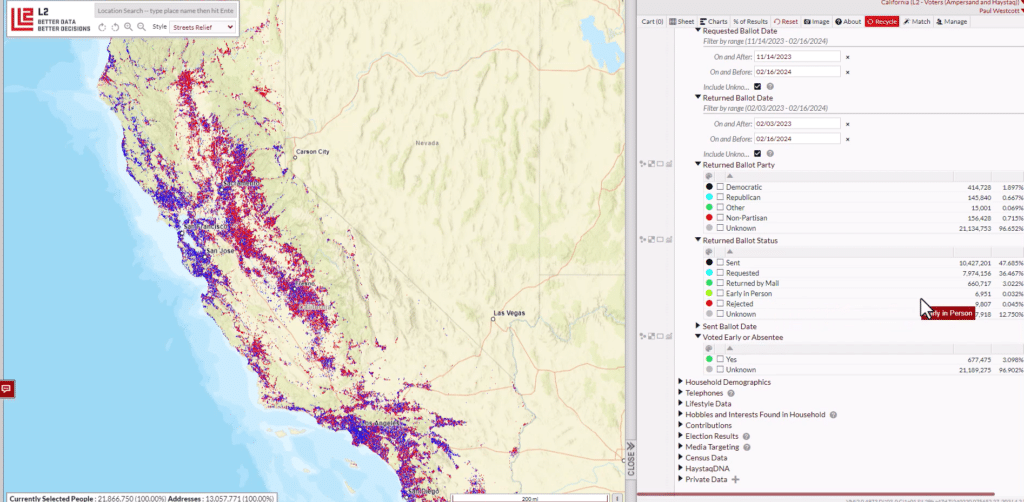
Early voting was on the rise before COVID, and post-COVID has become extremely prevalent even in states that have previously shunned early voting.
L2, the nation’s largest and longest-serving nonpartisan voter file provider, will collect early return data from 44+ states during the General Election in 2024. The states for which L2 will not have data are those that do not make early voter data available publically.
It’s also important to note that some states provide early voter statistics based on the aggregate number of individuals who have turned out; however, when the data is matched on an individual level, the numbers provide far greater detail.
Here are the data available from states when it comes to early return data:
- Requested Ballot: In states/counties that don’t maintain a permanent absentee file or don’t have mandatory mail/absentee voting this is a critical piece of data letting you know a voter has requested a ballot and the date in which they did.
- Received or Sent Ballot: This will let you know which voters have received their ballot and what date that occurred. If you are using L2 you can find voters that typically vote less or more than two weeks before the election just to give you an idea how fast that ballot will be turned around.
- Returned Ballot: If a voter has returned their ballot, this will typically come with a date stamp as well as an indication of how they returned their ballot. Those types of returned ballots are in the bullet points below…
- Returned by Mail – This can be by postal mail or a dropbox
- Early in Person – This is in those states/counties that have early voting in person at a polling location before election day
- Rejected – These are ballots that have been rejected for a multitude of reasons however most rejected ballots are “cured” and those votes will eventually count if that individual is a registered voter in that state.






